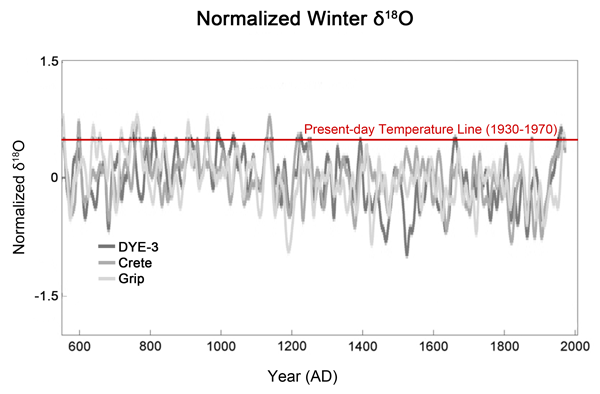Reference
Vinther, B.M., Jones, P.D., Briffa, K.R., Clausen, H.B., Andersen, K.K., Dahl-Jensen, D. and Johnsen, S.J. 2010. Climatic signals in multiple highly resolved stable isotope records from Greenland. Quaternary Science Reviews 29: 522-538.
Description
Working with 20 ice core records from 14 different sites, all of which stretched at least 200 years back in time, as well as near-surface air temperature data from 13 locations along the southern and western coasts of Greenland that covered approximately the same time interval (1784-2005), plus a similar temperature data set from northwest Iceland (said by the authors to be employed "in order to have some data indicative of climate east of the Greenland ice sheet"), Vinther et al. proceeded to demonstrate that winter δ18O was "the best proxy for Greenland temperatures." Then, based on that determination and working with three longer ice core δ18O records (DYE-3, Crete and GRIP), they developed a temperature history that extended more than 1400 years back in time. In describing this record, the seven scientists said that "temperatures during the warmest intervals of the Medieval Warm Period," which they defined as occurring "some 900 to 1300 years ago, "were as warm as or slightly warmer than present day Greenland temperatures [italics added]." Hence, we conclude that for southwest Greenland, various portions of the MWP (AD 700-1100) were warmer than they have been over the last several years.





